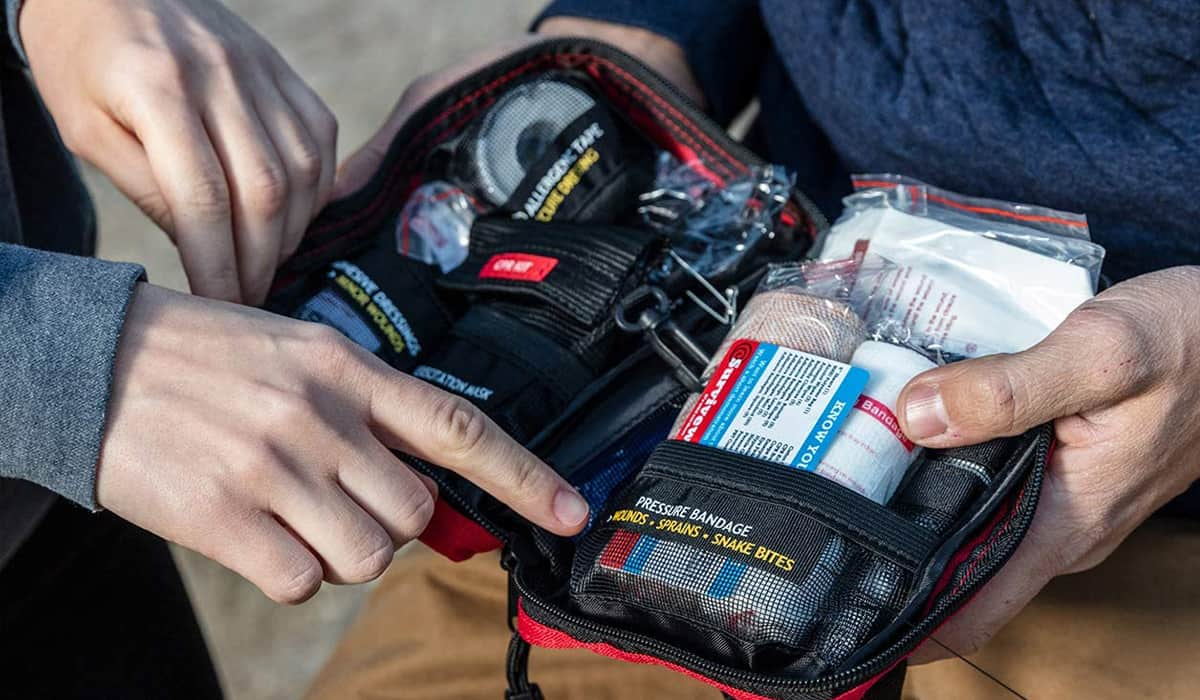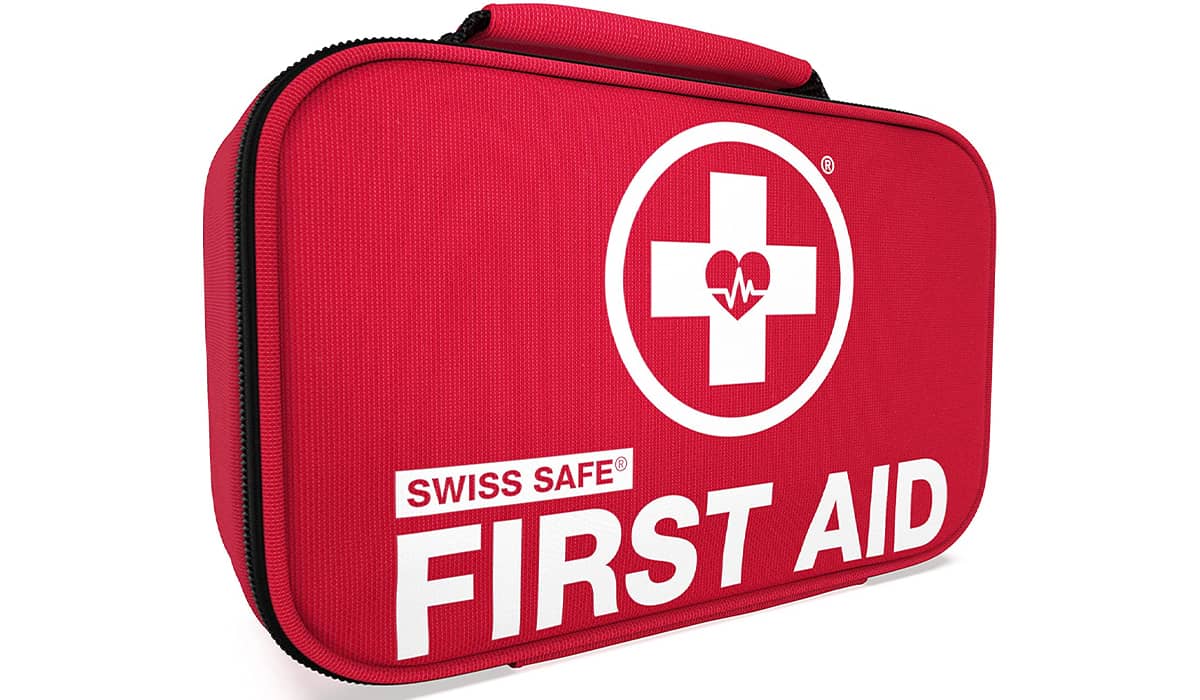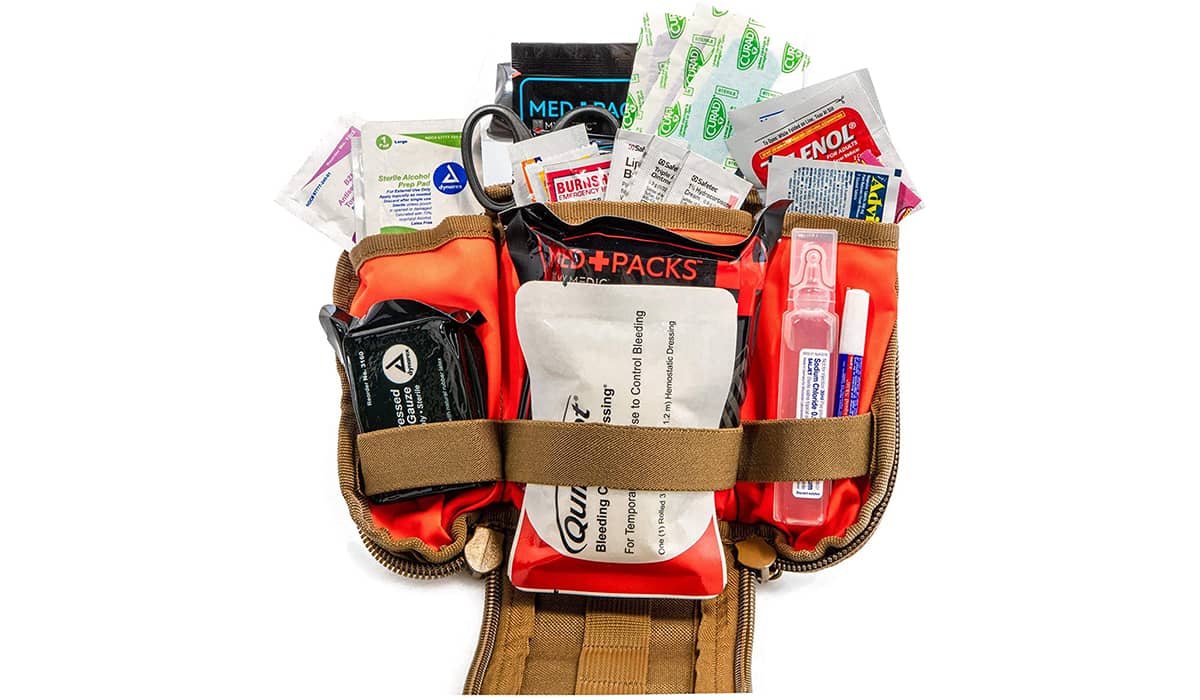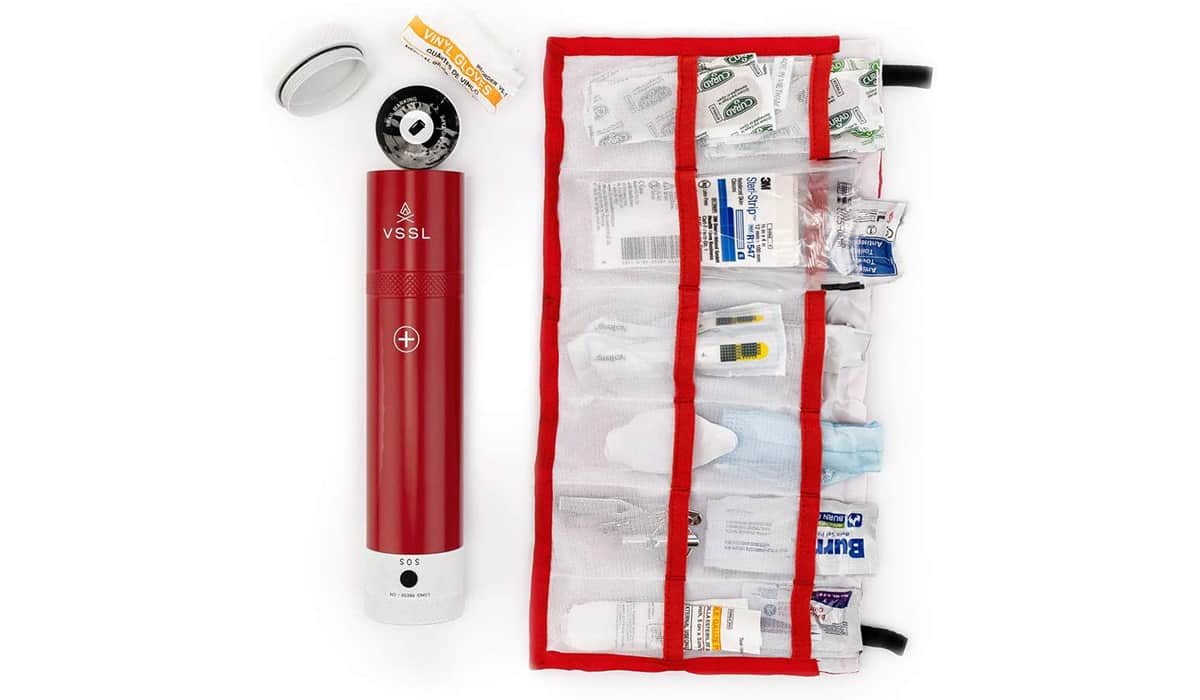Be Prepared with the Best First Aid Kit
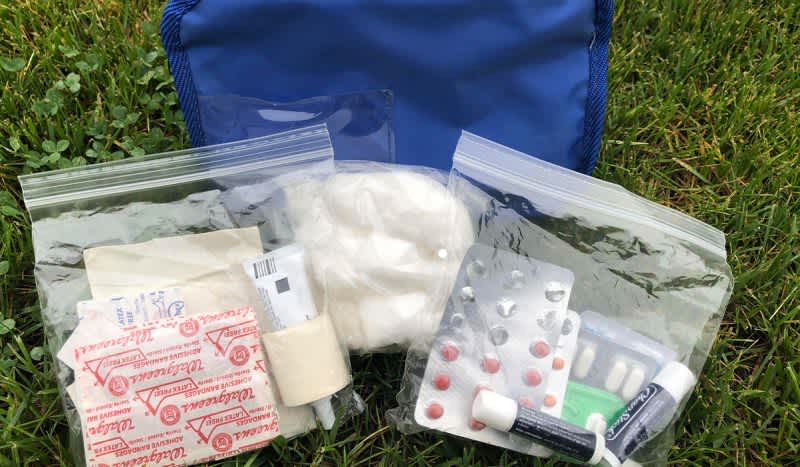
1. Surviveware Small First Aid Kit – Editors Pick
For take-along first aid kits, I want to get as much stuff in as small a package as possible. At just under 160 cubic inches, and right at a pound, the Small First Aid Kit from Surviveware checks those boxes. The 600D poly bag is water resistant and keeps everything organized and contained. Need to add something else? The MOLLE system straps let you do so. Inside pockets are organized and specific, so you can quickly see what needs to be replaced, and access things in an emergency. The size is great. It’s easy to throw in a daypack or a glovebox. One thing this kit has that not all the others do, is a first aid manual. Maybe you aren’t up to date on your CPR and first aid assessments and you’ve forgotten a few things, that guide could literally be a lifesaver.
2. Swiss Safe Outdoor First Aid Kit – Budget Pick
In general, first aid kits aren’t super expensive to begin with, unless you need some specialized supplies. What makes this the budget pick, however, is just how many supplies you get for your investment. At the sweet spot of size, right at a pound and less than 100 cubic inches, it’s tough to argue that you can’t find room for this first aid kit on your next adventure. You won’t find a lot of depth of the supplies, many items only including one or two, but the sheer breadth of materials included make it a great option, as long as you can restock it. It’s also including some outdoor survival items, like a Fire starter, signaling mirror, hand saw, and emergency fishing kit. For the money, it’s tough to beat all they packed into this kit.
3. My Medic Range Medic Advanced – Trauma Pick
Most first aid kits can cover basic cuts, scratches, burns and minor injuries, but outdoor adventure sometimes exposes us to the risk of far more life-threatening accidents. There’s a big difference between a first aid kit and a trauma kit, and while this may not be a true trauma kit, it certainly includes some of the supplies and tools you will need to treat a major trauma event. The two most important things My Medic is including that make treating more serious wounds a reality are the tourniquet and chest seal. Sure, there are bandages and wipes and basic first aid things, but in the case of a serious fall that could lead to a puncture, or the possibility of a gun shot wound, being able to stop the flow of blood or escape of air from the chest could literally mean the difference between life and death. This kit doesn’t have as many of the smaller items as some of the others, it isn’t a 200-piece bag, but if your adventure means real risk of a serious injury, it does include some things you won’t want to be without.
4. VSSL First Aid – All-Terrain Pick
Poly bags are great, they are light and easy to carry, but water-resistant and waterproof are not the same thing. Rips, tears, burns, all of these can expose your first aid supplies and render them useless. Unless you’re using a VSSL first aid kit. Chances are you already have a similar aluminum bottle in your pack for water, you can have another that stores all your first aid needs in a similar-sized container that is far more secure and protected from the elements. Simple unscrew one of the ends and remove the roll pouch that includes all your supplies. Not only is it a super-secure way to store your first-aid supplies, it’s also an emergency flashlight and compass. Every trip might not require that kind of security for your supplies, but if you know you’ll be on or near water it’s probably something you should consider.
5. Adventure Medical Kits Sportsman 100 – Weekender Pick
It’s just a fact, when you get even a little off the grid things can get sideways in a hurry. Not only that, you can be exposed to things that folks who aren’t running in the backcountry will never encounter, so a first aid kit that doesn’t take that into account may well leave you wishing you’d made a different choice. The Sportsman 100 from Adventure Medical Kits has those little extras that you need for when you go off the pavement, and a wilderness first aid guide to help you deal with those problems that a standard first aid class doesn’t teach you about. The kit is loaded for 1-4 people for up to four days, so it’s not a huge pack, and it doesn’t have the high material count of some of the other options, but would you rather have a whole bunch of the wrong items, or a few of the items you really need?
Know basic first-aid skills
It’s a good idea for your entire family to get CPR and first aid certified. The American Red Cross is always offering classes, and often partners with schools, churches or community organizations to make these classes available to their members. There are online resources as well that can show you the basics but might not result in a certification. At the very least, pick up a basic first aid manual and either read it to the point of memorization, or keep it in your first aid kit.
Whichever route you decide to go, if you are planning on being in the backcountry for a while by yourself or as part of a group, it’s a good idea to get yourself familiar with basic life-saving techniques. It’s not something you can do later if things don’t pan out.
Everyday carry first aid
Even a small basic first aid kit can come in really handy for general use, let alone if something gets sideways. Car accidents, trips, falls, or more nefarious situations could well leave you needing some basic first aid until professional help arrives.
These days, most people are carrying a backpack or bag of some sort, and there’s almost always room in one of the pockets for a first aid kit. I would recommend also learning how to use and including a tourniquet as part of your EDC. Blood loss isn’t easy to deal with if you don’t have the right supplies, so for me, a tourniquet is a must.
Another must-do thing is to carry any medications within your EDC first aid kit. A minimum of a day’s worth, including basic pain meds, prescription medications and allergy medications for yourself and everyone in your group.
How long is a first-aid kit good for?
The short answer is 3-5 years, but you should always check every piece of your kit before you go afield. Bandages and other key parts of a kit can become less effective as they age.
How do I use a first aid kit?
Either take some training, either in-person or online, or carry a small first-aid manual in your pack or first aid kit. You need to have the basics for how to apply first aid when needed, or the kit is no good to you.
We are committed to finding, researching, and recommending the best products. We earn commissions from purchases you make using the retail links in our product reviews. Learn more about how this works.

